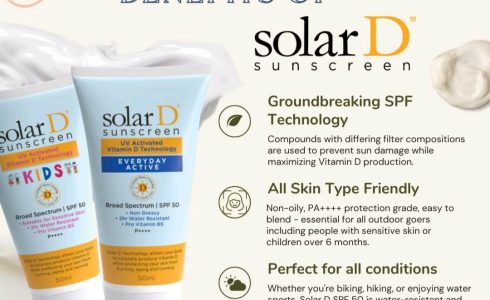
Menarini expands its dermatology portfolio with the launch of Solar D sunscreen
Menarini India Private Limited (“Menarini India”), part of the Menarini Group, the world’s largest Italian biopharmaceutical company, announces the launch of ‘Solar D®’ sunscreen – a breakthrough innovation in dermatology in over 70 years. Designed for everyone from individuals stepping outdoors to serious athletes, this revolutionary SPF 50, water and sweat-resistant sunscreen, uses a unique UV activated vitamin D technology that allows your body to naturally produce Vitamin D while protecting your skin from burning, ageing, and tanning. The groundbreaking SPF technology is specifically designed and formulated to prevent sunburn or sun damage while allowing the passage of sufficient UVB

























